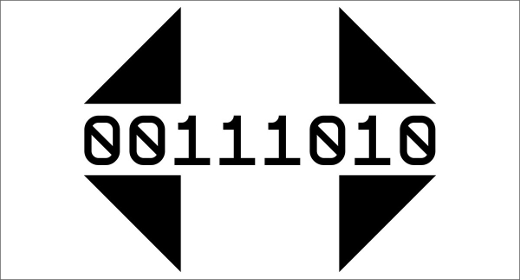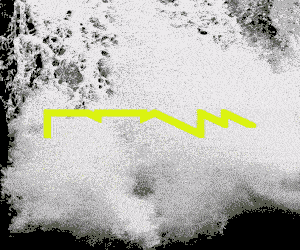 (11.17.06) Gescom, in whatever shape or form they take, have always caused a stir in the electronic music community. Classic electronic records, like Keynell and SKA002, were the cornerstones of the 90’s electronica movement. The collective of artists released on a series of labels, such as Source, Skam and OR. It is the last of these imprints that caused perhaps the greatest interest among many listeners, for it was on OR that the Gescom MiniDisc was released. This MD only project was the brain child of Alan Booth, Sean Brown (Autechre) and Russell Haswell and was first released in 1998 and heralded by Alan Philips of Sony Software, featured on the CD’s artwork, as the “first ever minidisc only release“. It was re-issued due to popular demand in 2001, but still on the micro media. Now, after five years of interest and high eBay sales, the Gescom MiniDisc, ironically, has been re-released for a third time, but now on the much more universal CD format.
(11.17.06) Gescom, in whatever shape or form they take, have always caused a stir in the electronic music community. Classic electronic records, like Keynell and SKA002, were the cornerstones of the 90’s electronica movement. The collective of artists released on a series of labels, such as Source, Skam and OR. It is the last of these imprints that caused perhaps the greatest interest among many listeners, for it was on OR that the Gescom MiniDisc was released. This MD only project was the brain child of Alan Booth, Sean Brown (Autechre) and Russell Haswell and was first released in 1998 and heralded by Alan Philips of Sony Software, featured on the CD’s artwork, as the “first ever minidisc only release“. It was re-issued due to popular demand in 2001, but still on the micro media. Now, after five years of interest and high eBay sales, the Gescom MiniDisc, ironically, has been re-released for a third time, but now on the much more universal CD format.
The Gescom MiniDisc project was emblematic of the media on which it was first issued. The concept behind the release could not be accomplished on vinyl, and the minidisc was a new, futuristic means of recording. The idea behind the release was that the album would forever be changing, morphing, transforming; that the composition would never be the same. The album was broken, shattered, into shard like tracks, over eighty in total. The concept was that the minidisc was to be played on random. The bite size tracks, some seconds long and others minutes, would mould together, glitch meshing with string, snare mingling with bass, noise joining with silence. The listener’s audio equipment would not so much play the music, but create the music. But did Gescom succeed in their admirable idea, or was this audio project too difficult to fully accomplish?
The Gescom MiniDisc was a winner of the Prix Ars Electronica award, but is that enough to go on? The album, or experiment, still sounds quite fresh, but does this mean that Gescom achieved their experimental aims? In many respects, the threesome did succeed with the minidisc release. The album was as much about pushing the capabilities of the ATRAC compression system as it was a sonic excursion. The album is complex, bordering on difficult. The sounds are harsh, sometimes almost too aggressive. The notion of the album constantly shifting, changing, being born again, all through the shuffle button is a novel and clever concept, but one that could never be truly achieved due to play delay. When listening to the album on random, the brief interludes of silence between tracks lead to a lack of consistency and continuity, resulting in the listener being wrenched out of the audio merging experiment and being reminded of the tracks’ individuality. On this release, Gescom have left behind the melodics of Keynell or other releases and have moved more into noise. Depending on the listener’s musical preference this may be a good thing, but for this reviewer the MiniDisc release holds up poorly in light of other Gescom material.
The Gescom MiniDisc, at its release in 1998, was a true piece of electronic experimentation. Perhaps the tracks were not that nice, per say, but they did have a raw, testing element to them. The MD only project pushed technology with only the power of music to fuel it. The re-issue of the Minidisc release on CD seems to dilute what the Minidisc was, a musical trial, a stressing of sound, and an audio/media endurance test. A re-issue on CD does not fit with what the 1998 release was trying to do. However, the MD has now sadly died, and perhaps this does warrant a re-release of the material on compact disc. Now it is the CD player, and not the MD unit, that is the presenter of the music. There is an aspect of the tragic in this. The Gescom MiniDisc was released as a minidisc, not a CD. But, the minidisc, as a media form, failed whilst it’s five inch competitor flourished. One truly positive thing to say about the Gescom MiniDisc (now on CD ) is that its musical content can never be fully reviewed, as the idea behind the project was to tear consistency asunder, to trample on sequence, and deny the listener continuity. On every listen, the tracks are different as they are in a different order. The tracks might not fit together very well. Square music may be bludgeoned into circular holes, but they are made to fit through the ice like tyranny of technology.
The one thing the listener must keep in mind when critiquing the Gescom experiment is that this album was not about melodics or harmonies, but about testing sound. In this respect the Gescom MiniDisc is a resounding success.
MiniDisc is out now on Or. Buy it at Amazon.com.
















